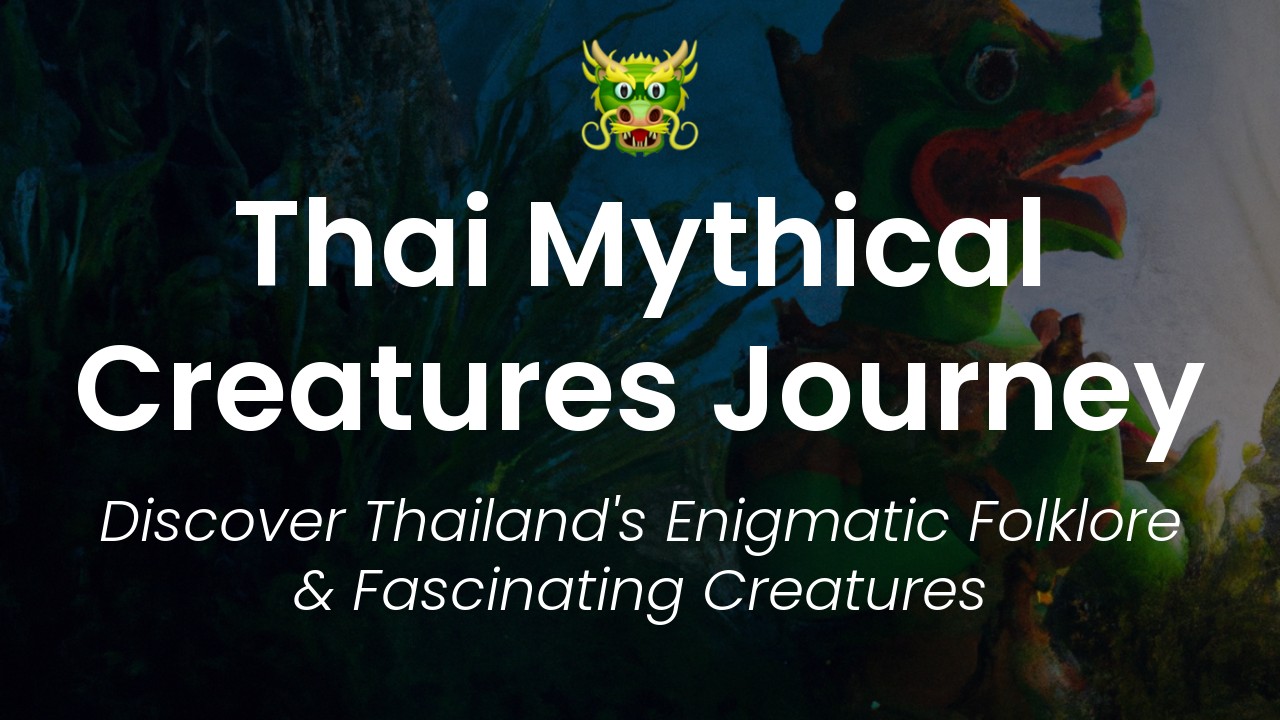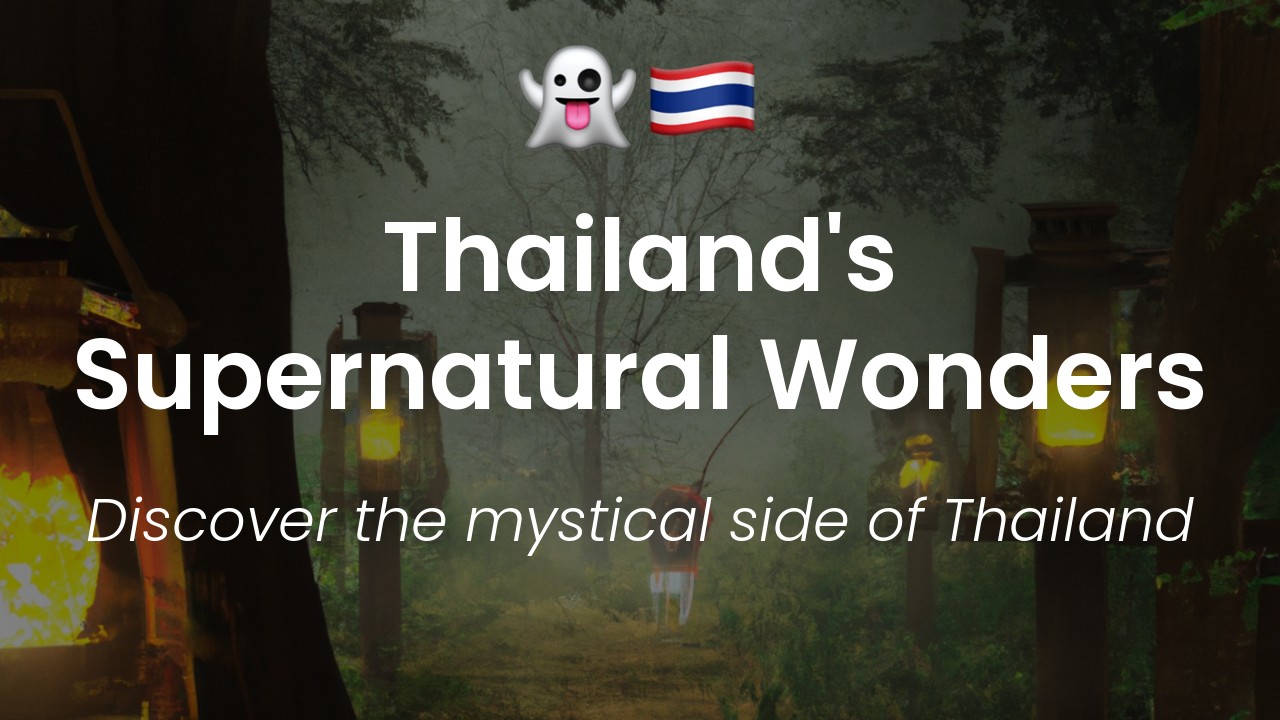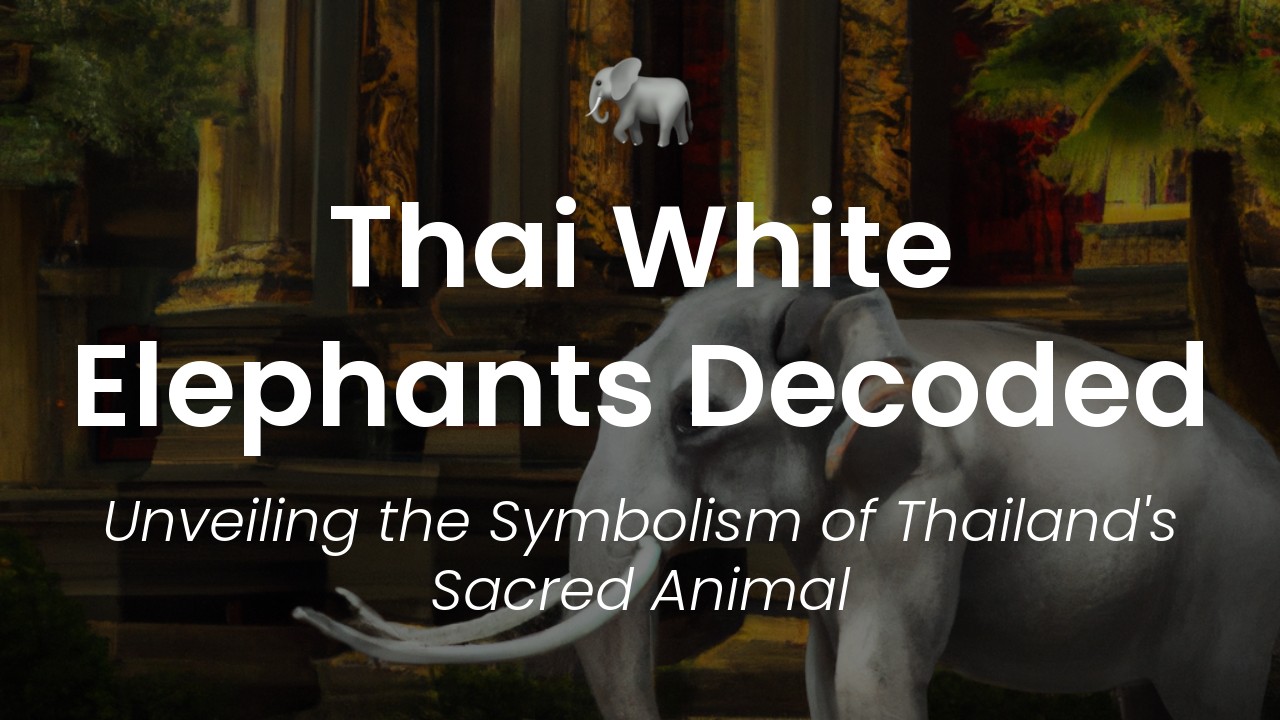As a Thai native, I grew up hearing stories of mythical creatures that roamed the land of my ancestors. From tales of powerful naga serpents in the Mekong River to mischievous krasue spirits that prey on unsuspecting villagers, these creatures have always held a special place in the rich tapestry of Thai folklore.
Throughout history, the notion of mythical creatures has been used as a way to explain the unexplainable, make sense of the unknown, and even warn people of the dangers of their surroundings. These creatures were not just a figment of imagination or superstition, but an integral element that shaped the beliefs and values of Thai society.
In my blog article, "Uncovering Thailand's Fascinating Mythical Creatures: A Cultural Journey!", I will take you on a journey back in time to explore the fascinating world of Thai folklore. We will delve into the origins, characteristics, and significance of some of the most popular mythical creatures in Thailand. From the majestic garuda, a bird-like creature that symbolizes virtue and power, to the mischievous phii pob spirit, which is said to cause illness and misfortune to those who cross its path, we will discover the unique stories and legends that define these creatures.
Join me as we unravel the mysteries of these enchanting creatures and gain a deeper understanding of Thai culture and the values its people hold dear. Let's explore the world of mythical creatures in Thailand – a world that was once shrouded in mystery but has now been brought to life for you to experience.
The Role of Mythical Creatures in Thai Culture
Thai culture is deeply rooted in tradition and beliefs, which include the worship of mythical creatures. These fantastical beings are believed to possess immense power and represent a particular aspect of Thai culture.
In Thailand, there are various mythical creatures that have left a significant mark on the country's folklore and mythology. These creatures range from a divine bird-like creature to a ghostly spirit, each possessing its own unique traits and abilities.
The Mystical Power of the Garuda
One of the most iconic creatures in Thai mythology is the Garuda. The Garuda is a bird-like creature that has the torso of a human and the head of an eagle. This divine creature is believed to possess immense strength and represents the deity Vishnu in Hindu mythology.
The Garuda is considered to be a symbol of power, strength, and protection, and is often depicted in various forms of art such as paintings, statues, and carvings. According to Thai folklore, the Garuda is capable of swooping down and picking up elephants, indicating its immense strength.
The Terrifying Legend of the Krasue
One of the most terrifying creatures in Thai mythology is the Krasue, a ghostly spirit that is said to haunt the night. The Krasue is believed to be a woman who was cursed and became a flying head that feeds on blood.
The Krasue is depicted as a floating head with guts and intestines trailing behind. It is said that the only way to kill a Krasue is to capture its head and destroy it before sunrise. This legend has become an essential aspect of Thai horror stories and folklore.
The Playful and Mischievous Nature of the Nang Ta-khian
The Nang Ta-khian is a tree spirit that is represented by a beautiful woman who lives in a particular type of tree called the Ta-khian tree. This playful spirit is known to be mischievous and causes trouble for people who destroy her tree or challenge her.
According to Thai folklore, the Nang Ta-khian would seduce and lure men to their death if they destroy her tree. This legend has become popular among Thai people, and Nang Ta-khian festivals are held every year to celebrate and respect the tree spirit.
The Sacred Symbolism of the Phaya Naga
The Phaya Naga is a serpent-like creature that is revered in Thailand and symbolizes power, wealth, and prosperity. The Phaya Naga is depicted as a giant serpent with a dragon's head and is believed to reside in bodies of water such as rivers, lakes, and waterfalls.
According to Thai tradition, the Phaya Naga is capable of granting wishes to those who show respect and worship the creature. Therefore, many people in Thailand believe in the Phaya Naga and offer prayers and offerings in its honor.
The Legendary Story of the Mae Nak Ghost
The Mae Nak ghost is another popular legend in Thai mythology and is believed to have existed in the Ayutthaya era. The story tells of a woman named Mae Nak who passed away during childbirth and later returned as a ghost to be with her husband and child.
The Mae Nak ghost is said to be a benevolent spirit that protects her family and the community but is feared by those who disrespect and harm her loved ones. The legend of Mae Nak has become an important aspect of Thai culture, with many movies, plays, and books created that tell her story.
Rediscovering Thai Mythology Through Art and Literature
Thai mythology has a rich history that is deeply embedded in Thai culture and traditions. These mythical creatures are symbols of power, strength, and prosperity that are revered and respected by Thai people.
In recent years, several Thai artists and writers have rediscovered these mythical creatures, creating artwork and literature that reimagines Thai mythology in contemporary contexts. These works have played an essential role in preserving Thai culture and passing it down to future generations.
Conclusion
Thailand's mythology provides a vast array of fascinating creatures that represent different aspects of Thai culture. These creatures have become an essential part of Thai history and tradition, inspiring countless works of art and literature that keep their legacy alive.
Through these mythical creatures, we can gain a deeper understanding of Thai culture and tradition, and appreciate the richness of Thai mythology. If you plan to visit Thailand, be sure to explore and learn more about these mythical creatures to gain a better understanding of Thai beliefs and traditions.



